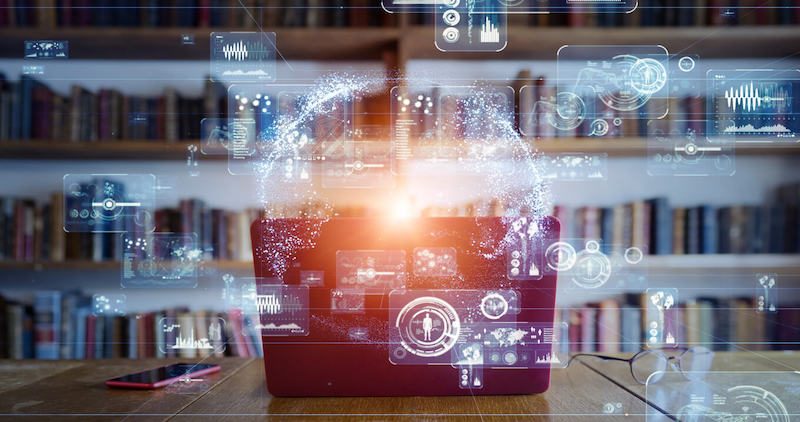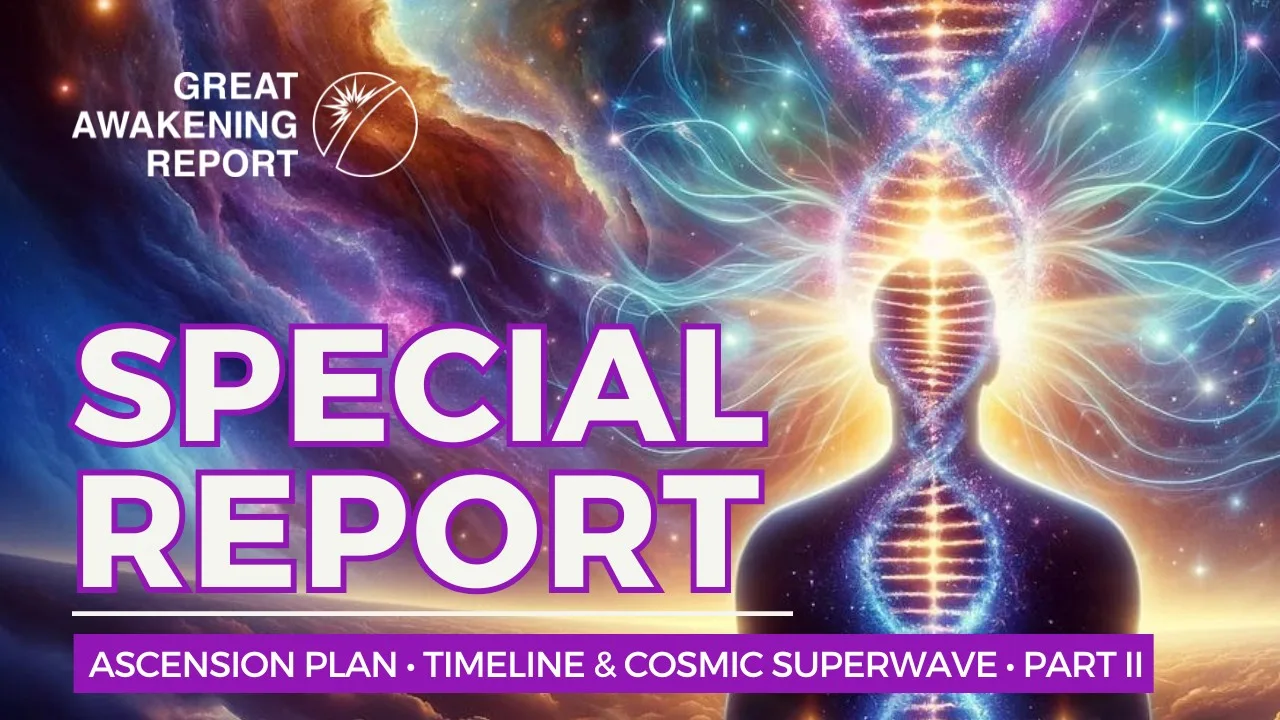Published Date: March 30, 2024
SPECIAL REPORT
TRUTH///AWAKENING///DISCLOSURE
AI INTEGRATION | PERSONAL & CORPORATE | PART I
A Global Integration of Game Changing Advanced Technology
In the rapidly evolving digital era, artificial intelligence (AI) is no longer a futuristic concept—it is a present-day reality reshaping industries, economies, and personal lives. AI integration is not just about implementing new tools; it represents a paradigm shift in how we work, learn, and innovate. As businesses and individuals alike navigate this transformation, embracing AI-driven solutions has become essential for staying competitive and maximizing efficiency.
From streamlining corporate operations to enhancing personal productivity, AI’s potential is boundless. Advanced technology is redefining education through immersive learning labs, automating time management to improve workflow efficiency, and delivering cost-effective solutions that were once unimaginable. This shift is not just about automation but about unlocking human potential—freeing individuals and businesses to focus on creativity, strategic thinking, and high-value tasks.
The integration of AI is a game-changer, leveling the playing field for organizations of all sizes and empowering individuals to harness technology in ways that foster growth and innovation. As we embark on this journey of transformation, understanding AI’s role in education, corporate structures, and daily life is crucial for maximizing its benefits and navigating the challenges of this new frontier.
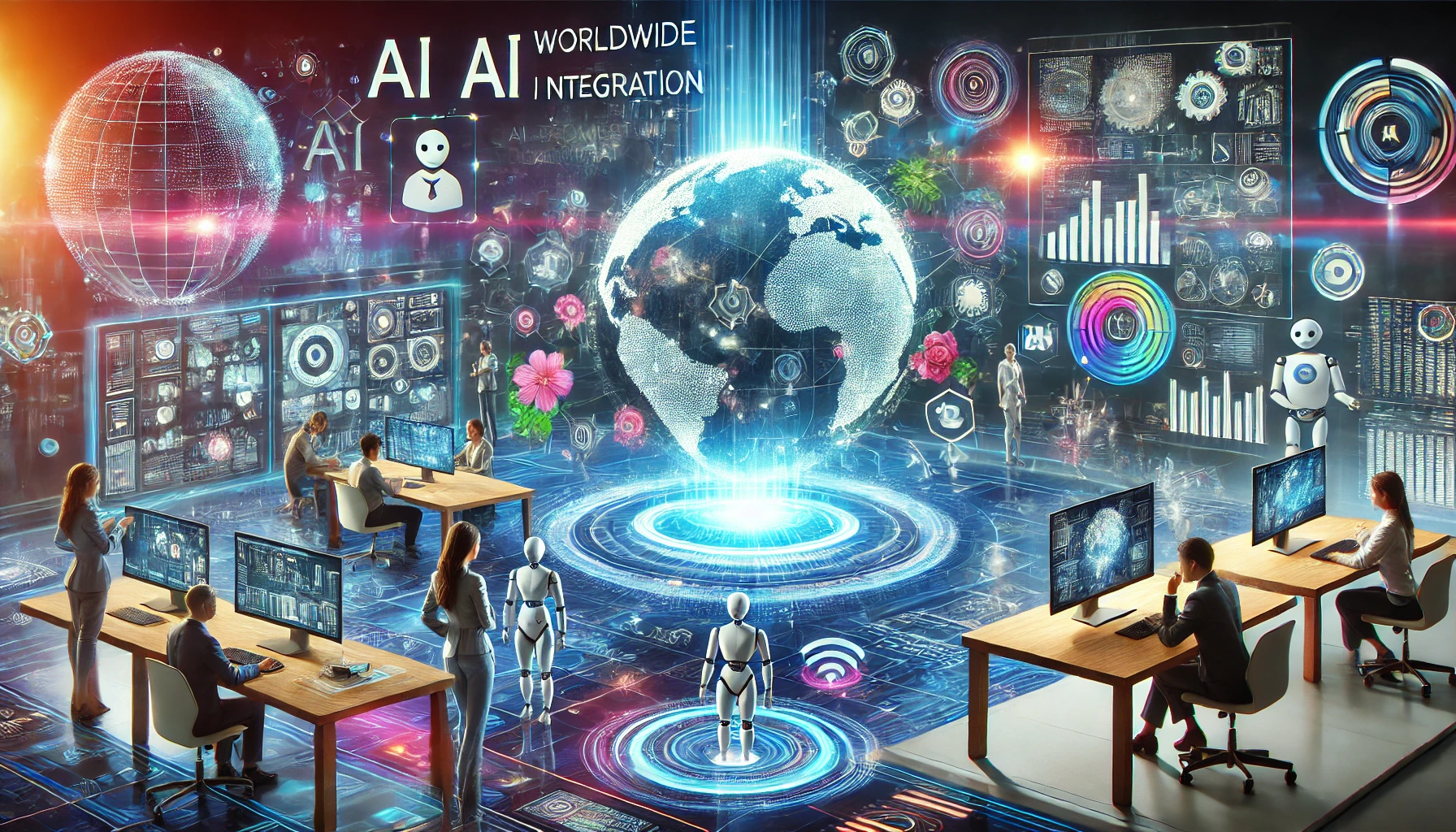
AI Integration Introduction
Artificial Intelligence (AI) is rapidly transforming industries, businesses, and personal productivity, reshaping the way we work, learn, and interact with technology. As AI continues to evolve, understanding its capabilities, implications, and opportunities is essential for individuals and organizations alike. This Special Report on AI Integration serves as a comprehensive guide, providing insights into how AI is being implemented across various sectors and how you can effectively leverage its potential.
This report is structured to provide a balanced perspective on AI integration, covering personal and corporate applications, cost efficiency, challenges, ethical considerations, and future trends. Whether you are a business leader looking to optimize operations, a professional seeking to enhance productivity, or an individual interested in understanding AI’s societal impact, this report offers practical knowledge and strategic insights to help you navigate the AI-driven world.
To make the most of this report, consider approaching it with a curious and open mindset. Each section is designed to build upon foundational AI concepts, moving from introductory discussions to more advanced applications. You can read the report sequentially for a structured learning experience or use it as a reference guide, jumping to specific sections based on your interests and needs. Additionally, the report highlights real-world applications, best practices, and thought-provoking discussions on the future of AI, ensuring that you stay ahead in this transformative era.
By engaging with this report, you will gain a deeper understanding of AI’s role in both personal and corporate environments, the ethical considerations surrounding its use, and the steps needed to prepare for an AI-integrated future. Whether you are exploring AI for the first time or looking to refine your existing knowledge, this report equips you with the insights necessary to make informed decisions and embrace AI as a tool for progress.
AI Integration Topic Titles
I. Introduction to AI Integration
- The Evolution of AI: From Concept to Reality
- Understanding AI: What It Is and How It Works
- The Global Impact of AI on Industries and Societies
II. AI in Personal Development & Productivity
- AI as a Personal Assistant: Time Management & Organization
- Enhancing Learning & Skill Development with AI
- AI-Powered Decision Making: Data-Driven Personal Growth
- AI in Health & Wellness: Tracking, Diagnosis & Mental Well-being
III. AI in Corporate Transformation
- AI in Business Strategy: Driving Innovation & Efficiency
- AI-Powered Workforce: Automation vs. Human Collaboration
- AI in Customer Experience: Personalization & Engagement
- AI & Cybersecurity: Protecting Corporate Assets
IV. AI in Education & Learning Labs
- The Future of AI in Education: Personalized & Adaptive Learning
- AI-Driven Research & Development: Accelerating Discovery
- AI as a Mentor: Bridging Knowledge Gaps
V. AI & Cost Efficiency
- AI in Financial Management: Smarter Budgeting & Investment
- Reducing Operational Costs with AI-Driven Automation
- AI in Supply Chain & Logistics: Enhancing Efficiency
VI. Challenges & Ethical Considerations
- The Ethics of AI: Balancing Innovation & Responsibility
- AI & Job Displacement: Myths vs. Reality
- Ensuring AI Fairness: Bias, Transparency & Accountability
VII. The Future of AI Integration
- AI & The Future of Work: What’s Next?
- The Role of AI in Global Governance & Policy Making
- Preparing for an AI-Integrated World: Steps for Individuals & Businesses
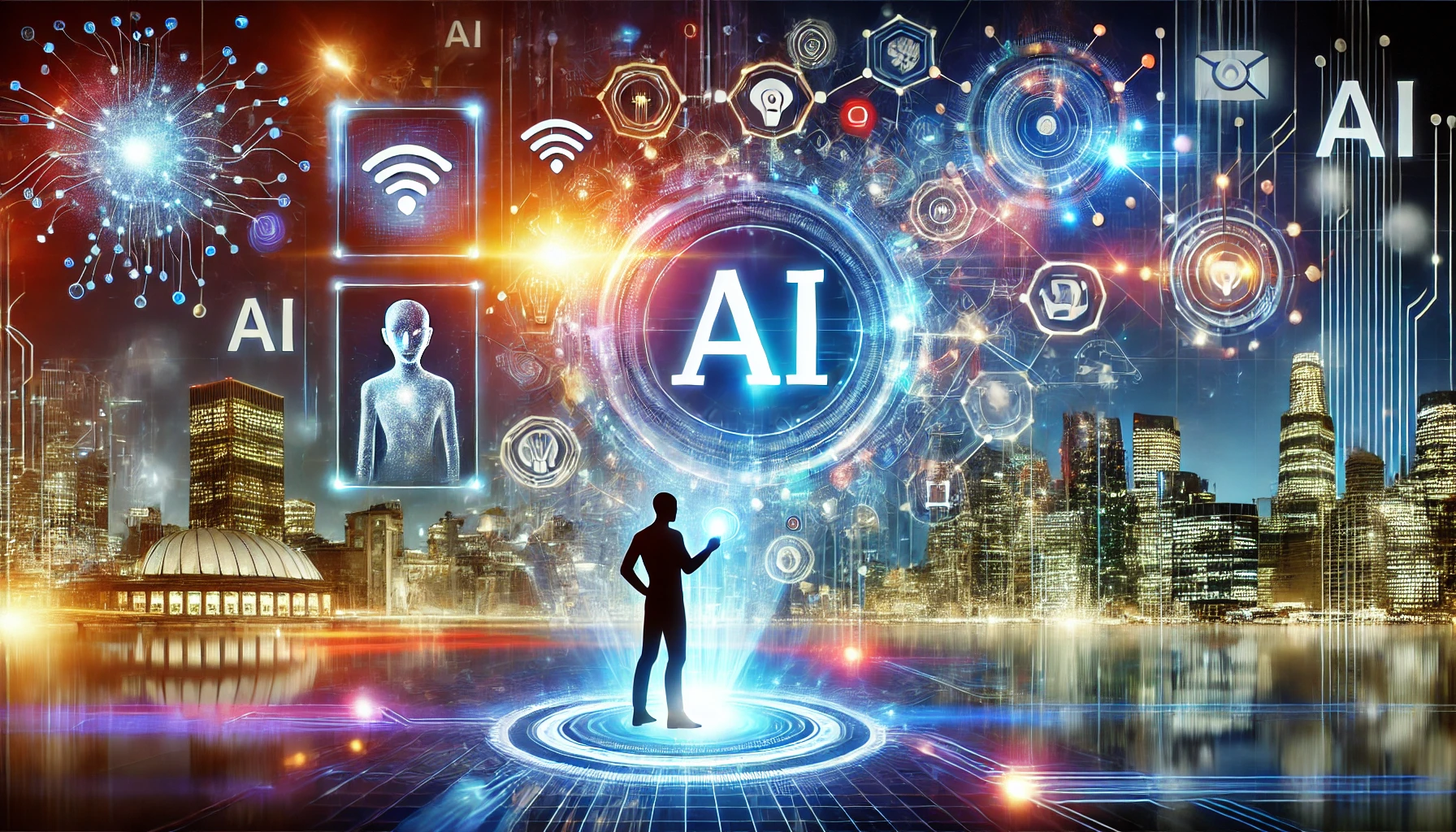
I. Introduction to AI Integration
The Evolution of AI: From Concept to Reality
Artificial Intelligence (AI) has evolved from a theoretical concept into a transformative force shaping industries and everyday life. The idea of machines mimicking human intelligence dates back to ancient myths, but it wasn’t until the mid-20th century that scientists and mathematicians laid the groundwork for modern AI. Early developments included Alan Turing’s work on machine intelligence and the advent of neural networks in the 1950s and 60s.
Over the decades, AI has progressed through phases of optimism and stagnation, known as “AI winters,” where funding and interest waned due to technological limitations. However, with the rise of big data, improved computing power, and advanced algorithms, AI has experienced an unprecedented boom in recent years. Today, AI systems can process vast amounts of information, recognize patterns, and even make autonomous decisions. From self-driving cars to sophisticated language models, AI has transitioned from a futuristic vision to an integral part of modern life, influencing industries, businesses, and personal experiences alike.
Understanding AI: What It Is and How It Works
At its core, AI is the simulation of human intelligence in machines. It enables computers to perform tasks that traditionally required human cognition, such as learning from data, recognizing speech, making decisions, and solving complex problems. AI can be classified into different types based on functionality and capability. Narrow AI (or Weak AI) is designed for specific tasks, such as voice assistants like Siri and Alexa, recommendation algorithms on streaming platforms, and fraud detection systems in banking. In contrast, General AI (or Strong AI) refers to machines with human-like cognitive abilities, capable of reasoning, problem-solving, and adapting across various domains—though this level of AI is still in development.
AI works through several key technologies, including machine learning (ML), deep learning, and natural language processing (NLP). Machine learning enables computers to improve their performance over time by analyzing large datasets and identifying patterns. Deep learning, a subset of ML, uses artificial neural networks to process information in a way that mimics the human brain, allowing for more complex decision-making and recognition capabilities. Natural language processing powers AI-driven chatbots, automated translation tools, and sentiment analysis systems, bridging the gap between human communication and machine interpretation. Understanding these fundamental aspects of AI is crucial for appreciating its vast potential and the challenges associated with its integration into daily life.
The Global Impact of AI on Industries and Societies
AI is not just an emerging technology—it is a global force driving economic, social, and industrial transformation. Across various sectors, AI is revolutionizing how businesses operate and how people interact with technology. In healthcare, AI-powered diagnostic tools enhance disease detection, robotic surgeries improve precision, and predictive analytics help prevent outbreaks. In finance, AI algorithms optimize investment strategies, detect fraud, and automate risk assessments, leading to more secure and efficient financial operations. The manufacturing industry benefits from AI-driven automation, increasing productivity, reducing costs, and minimizing human errors.
Beyond industry applications, AI’s impact on society is profound. AI-driven automation is reshaping the job market, raising concerns about workforce displacement while simultaneously creating new opportunities for innovation and employment in AI-related fields. Ethical considerations, such as bias in AI decision-making, data privacy concerns, and the potential misuse of AI for surveillance, have become major global discussions. Additionally, AI plays a crucial role in addressing global challenges, from climate change modeling to disaster response and humanitarian aid.
As AI continues to evolve, its integration into industries and daily life will only deepen, bringing both opportunities and challenges. Understanding AI’s development, capabilities, and impact is essential for businesses, policymakers, and individuals navigating this transformative era.
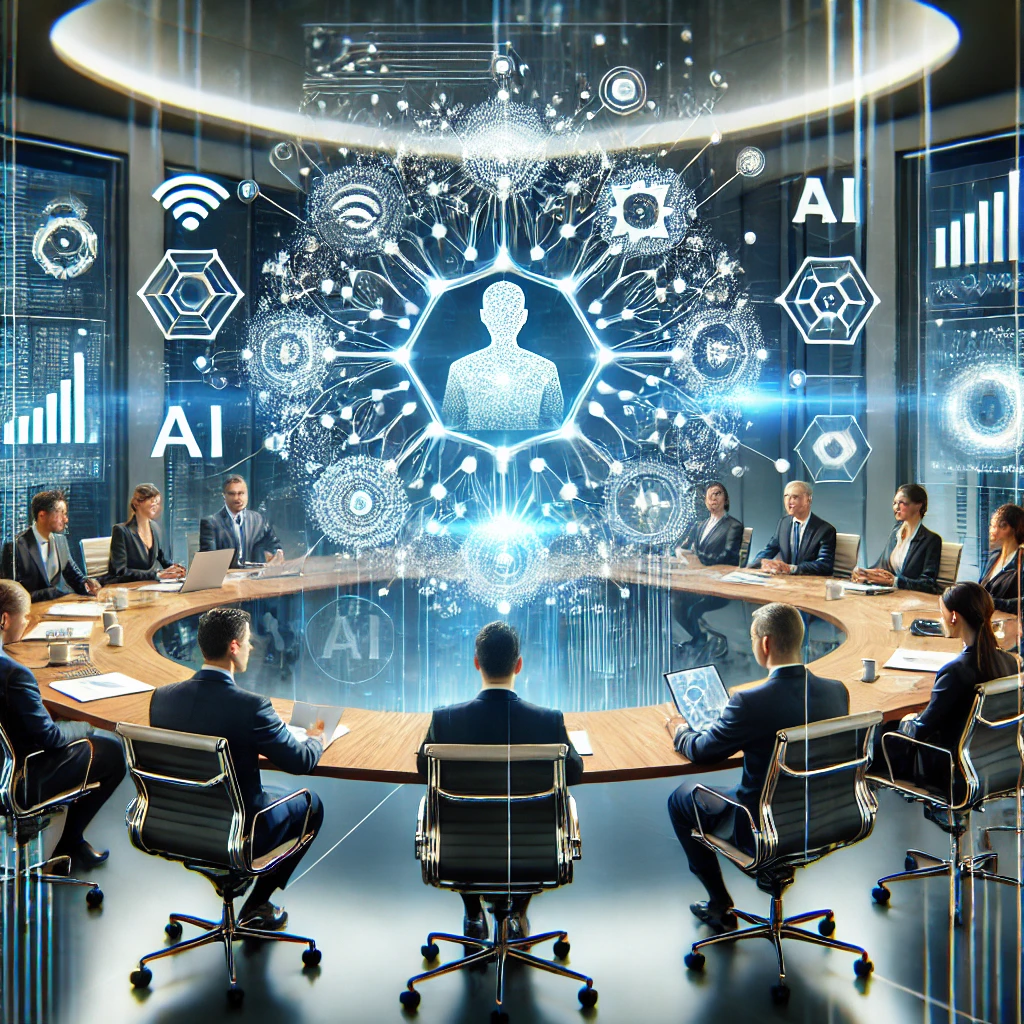
II. AI in Personal Development & Productivity
AI as a Personal Assistant: Time Management & Organization
In an increasingly fast-paced world, managing time efficiently is crucial for personal and professional success. AI-powered personal assistants, such as Google Assistant, Siri, and Alexa, have revolutionized time management and organization. These AI-driven tools help users schedule meetings, set reminders, organize to-do lists, and even automate repetitive tasks. By learning user preferences and habits, AI assistants provide personalized recommendations that optimize daily routines and improve productivity.
AI also enhances workflow automation through tools like smart calendars and email filtering. For instance, AI-driven scheduling software can analyze availability and automatically arrange meetings, reducing the hassle of back-and-forth communication. AI chatbots and virtual assistants can handle administrative tasks, freeing up time for individuals to focus on more strategic and creative endeavors. As AI continues to advance, personal assistants are becoming more intuitive, seamlessly integrating into daily life to enhance efficiency and reduce cognitive overload.
Enhancing Learning & Skill Development with AI
AI has transformed the way individuals acquire knowledge and develop new skills. Adaptive learning platforms, such as Coursera, Udemy, and Duolingo, leverage AI to personalize learning experiences based on an individual’s progress, strengths, and weaknesses. By analyzing user engagement and performance, AI adjusts the difficulty level, suggests tailored content, and provides instant feedback, making learning more effective and engaging.
Beyond online courses, AI-driven mentorship programs and career development tools help individuals refine their skills and explore new opportunities. AI can analyze job trends, recommend training programs, and even simulate real-world scenarios for hands-on learning. In corporate settings, AI-powered training programs use virtual reality (VR) and augmented reality (AR) to enhance employee development. This dynamic approach to education ensures that individuals can continuously upskill and adapt to an evolving job market, making lifelong learning more accessible and efficient.
AI-Powered Decision Making: Data-Driven Personal Growth
Personal growth often involves making critical decisions related to career, finance, and life goals. AI assists in this process by providing data-driven insights that help individuals make more informed choices. For example, AI-powered financial advisors analyze spending habits and investment patterns to recommend optimal savings strategies and wealth management solutions. Similarly, AI-driven career planning tools assess skills, interests, and job market trends to suggest career paths that align with an individual’s strengths and aspirations.
AI is also revolutionizing personal development by helping individuals set and track goals more effectively. Productivity apps with AI integration, such as Notion, Todoist, and Evernote, analyze user behaviors and suggest strategies to enhance focus and efficiency. AI-based analytics provide real-time insights into habits, helping users identify patterns that contribute to success or hinder progress. By leveraging AI’s ability to process vast amounts of data and detect trends, individuals can make better decisions that align with their personal and professional ambitions.
AI in Health & Wellness: Tracking, Diagnosis & Mental Well-being
AI is playing an increasingly vital role in personal health and wellness, offering advanced tools for monitoring physical and mental well-being. Wearable AI devices, such as Fitbit, Apple Watch, and WHOOP, track key health metrics like heart rate, sleep patterns, and activity levels, providing real-time insights into overall well-being. These AI-driven health trackers use predictive analytics to identify potential health risks, allowing individuals to take proactive measures to improve their lifestyle.
In medical diagnostics, AI-powered applications assist in detecting diseases early, analyzing medical imaging, and even suggesting personalized treatment plans. AI-driven chatbots and virtual health assistants provide instant medical guidance, reducing the burden on healthcare providers and giving individuals access to reliable health information.
Beyond physical health, AI is also making strides in mental well-being. AI-powered therapy apps, such as Woebot and Wysa, use natural language processing (NLP) to engage users in conversations that help manage stress, anxiety, and depression. These AI-driven platforms offer cognitive behavioral therapy (CBT) techniques and mindfulness exercises, making mental health support more accessible and affordable. By integrating AI into health and wellness, individuals can take a proactive approach to self-care, leading to improved quality of life and long-term well-being.
AI’s role in personal development and productivity is rapidly expanding, offering powerful tools that enhance efficiency, decision-making, and overall well-being. As these technologies continue to evolve, they will become even more integral to helping individuals navigate their personal and professional lives with greater ease and effectiveness.
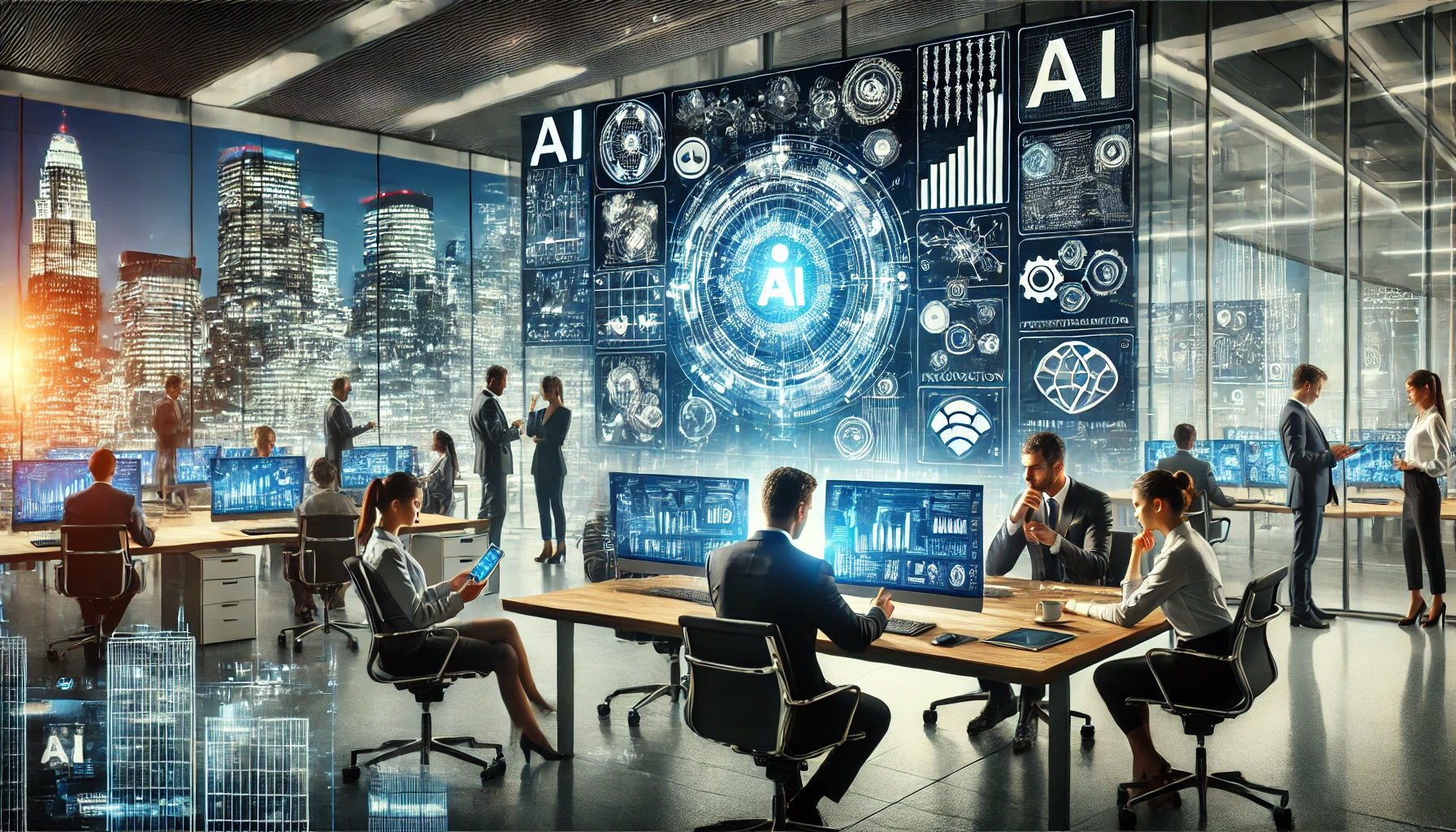
III. AI in Corporate Transformation
AI in Business Strategy: Driving Innovation & Efficiency
AI is revolutionizing business strategy by enabling companies to make data-driven decisions, streamline operations, and enhance innovation. With the ability to process vast amounts of data in real-time, AI helps organizations identify market trends, customer preferences, and operational inefficiencies, leading to more informed strategic planning. AI-powered analytics tools, such as predictive modeling and demand forecasting, allow businesses to anticipate changes and make proactive adjustments to their strategies.
In addition to decision-making, AI fosters innovation by automating repetitive tasks and freeing up human talent for higher-value activities. Businesses can leverage AI-driven R&D tools to accelerate product development, enhance supply chain logistics, and optimize pricing strategies. By integrating AI into their strategic planning, companies can stay ahead of competitors, increase operational efficiency, and drive continuous growth in an increasingly digital economy.
AI-Powered Workforce: Automation vs. Human Collaboration
One of the most significant transformations AI brings to the corporate world is the evolution of the workforce. Automation is replacing routine and repetitive tasks, allowing businesses to operate more efficiently while reducing costs. AI-driven tools are automating data entry, customer service inquiries, and even complex decision-making processes in industries such as finance, manufacturing, and healthcare. However, AI is not simply a replacement for human workers; instead, it is fostering a new era of human-AI collaboration.
Rather than eliminating jobs, AI is reshaping roles, requiring workers to adapt and develop new skills. Employees are now focusing on problem-solving, creativity, and emotional intelligence—skills that AI cannot replicate. Businesses that successfully integrate AI while investing in workforce upskilling will achieve the best results, creating a collaborative environment where human intelligence and AI capabilities complement one another. The future of work will be defined by businesses that embrace AI while also valuing human ingenuity.
AI in Customer Experience: Personalization & Engagement
Customer expectations are rapidly evolving, and AI is helping businesses meet these demands by delivering personalized and seamless experiences. AI-driven recommendation engines, like those used by Amazon and Netflix, analyze customer behavior to provide tailored product and content suggestions, increasing engagement and sales. Similarly, AI chatbots and virtual assistants enhance customer service by providing instant, 24/7 support, resolving inquiries efficiently without human intervention.
AI-powered sentiment analysis enables businesses to understand customer emotions and feedback in real time, allowing them to refine marketing strategies and product offerings. Automated email campaigns, AI-driven social media interactions, and dynamic pricing models further enhance customer engagement. By leveraging AI to personalize experiences, businesses can foster deeper customer relationships, increase brand loyalty, and drive revenue growth in an increasingly competitive marketplace.
AI & Cybersecurity: Protecting Corporate Assets
With the rise of digital transformation, cybersecurity threats have become a major concern for businesses. AI is playing a critical role in strengthening corporate security by detecting and preventing cyber threats in real time. AI-powered security systems analyze vast amounts of data to identify patterns associated with fraudulent activities, malware, and hacking attempts, allowing companies to respond proactively before major breaches occur.
Advanced AI-driven security measures, such as biometric authentication and behavioral analytics, enhance identity verification and prevent unauthorized access. AI also improves fraud detection in financial transactions, helping businesses mitigate risks and protect sensitive customer data. As cyber threats become more sophisticated, AI-powered security solutions will continue to evolve, providing businesses with the necessary tools to safeguard their assets and maintain trust with customers and stakeholders.
Conclusion
AI is transforming corporate landscapes by driving innovation, optimizing workforce efficiency, enhancing customer experiences, and fortifying cybersecurity. Companies that embrace AI as a strategic asset will gain a competitive edge, while those that fail to adapt risk falling behind. As AI continues to evolve, its integration into corporate transformation will become not just a choice but a necessity for long-term success in the digital era.
IV. AI in Education & Learning Labs
The Future of AI in Education: Personalized & Adaptive Learning
The integration of AI in education is transforming traditional learning methods into more personalized, efficient, and accessible experiences. AI-powered adaptive learning systems analyze students’ strengths, weaknesses, and learning styles to tailor coursework accordingly. Platforms like Coursera, Khan Academy, and Duolingo use AI-driven algorithms to adjust content in real time, ensuring that students receive customized instruction that matches their progress and comprehension level.
Beyond personalization, AI is making education more inclusive. Language translation tools and speech-to-text applications allow students from diverse backgrounds to access learning materials in their native languages. AI-driven virtual tutors provide 24/7 support, helping students grasp complex concepts outside of classroom hours. As AI continues to evolve, it has the potential to create fully immersive, interactive learning environments that make education more engaging, accessible, and effective for students worldwide.
AI-Driven Research & Development: Accelerating Discovery
AI is revolutionizing research and development (R&D) by significantly reducing the time required for data analysis, hypothesis testing, and experimentation. In scientific fields, AI-driven tools analyze massive datasets, identify patterns, and generate insights that would take human researchers years to uncover. For example, AI is accelerating medical research by predicting potential drug interactions and assisting in the development of new treatments for diseases.
In academia, AI-powered platforms assist researchers by scanning vast amounts of literature, summarizing key findings, and even suggesting new research directions. AI-driven simulations and modeling tools enable scientists and engineers to test theories in a virtual environment before conducting physical experiments, saving time and resources. As AI continues to evolve, its integration into R&D will lead to groundbreaking innovations across various disciplines, pushing the boundaries of human knowledge and discovery.
AI as a Mentor: Bridging Knowledge Gaps
AI is playing a crucial role in bridging knowledge gaps by acting as a mentor and guide for learners at all levels. AI-powered mentorship programs provide personalized career guidance, skill development recommendations, and professional networking opportunities. AI chatbots and virtual tutors can answer student queries, provide instant feedback, and suggest additional learning resources tailored to an individual’s needs.
AI also facilitates lifelong learning by curating content based on an individual’s interests and career goals. Professionals looking to upskill or transition into new industries can leverage AI-driven platforms to find relevant courses, certifications, and learning materials. In corporate environments, AI-based training programs help employees stay updated with industry trends, ensuring continuous professional development.
By making knowledge more accessible and tailored to individual needs, AI is breaking down traditional barriers to education and mentorship. Whether guiding students, assisting researchers, or supporting professionals, AI is shaping the future of learning, making it more dynamic, efficient, and inclusive.
Conclusion
The integration of AI in education and research is not just enhancing learning experiences but also revolutionizing how knowledge is acquired, shared, and applied. AI-driven personalized learning, research advancements, and virtual mentorship programs are paving the way for a smarter, more connected world where education is no longer confined to classrooms but accessible to anyone, anywhere.
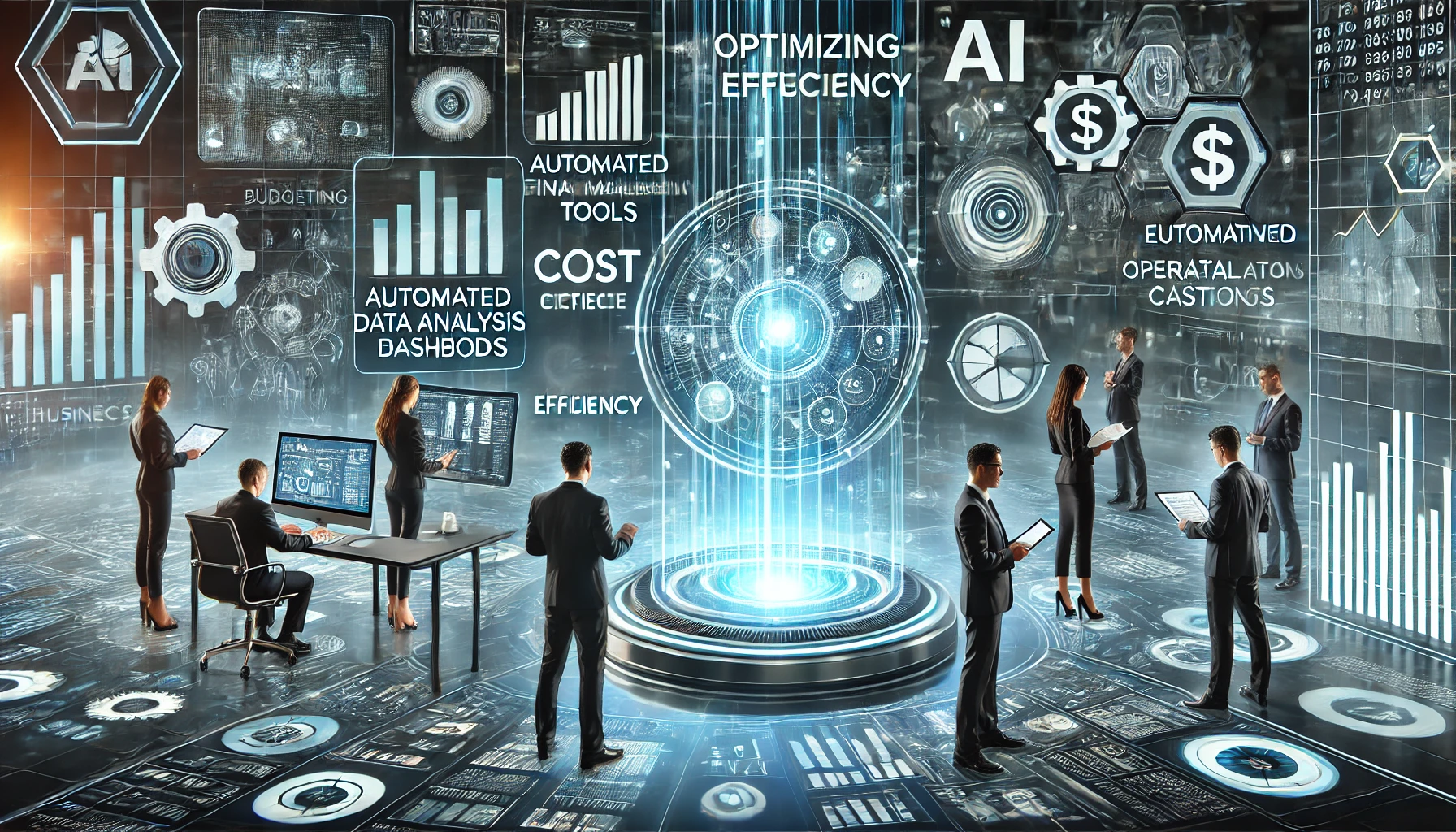
V. AI & Cost Efficiency
AI in Financial Management: Smarter Budgeting & Investment
AI is transforming financial management by providing data-driven insights that help individuals and businesses optimize their budgets and investments. AI-powered financial tools analyze spending patterns, forecast cash flow, and suggest cost-saving strategies, allowing users to make more informed financial decisions. Personal finance apps like Mint and YNAB use AI to track expenses, categorize transactions, and offer personalized budgeting recommendations.
For investors, AI-driven platforms analyze market trends, predict stock performance, and automate trading decisions. Robo-advisors, such as Betterment and Wealthfront, use machine learning to construct and manage investment portfolios, minimizing risks while maximizing returns. AI also enhances fraud detection and financial security by identifying unusual transaction patterns and preventing unauthorized access to accounts. As AI continues to evolve, its role in financial management will become even more integral, helping businesses and individuals optimize resources and achieve long-term financial stability.
Reducing Operational Costs with AI-Driven Automation
AI-driven automation is revolutionizing cost efficiency by streamlining operations and reducing the need for manual intervention. Businesses across industries are using AI-powered chatbots, robotic process automation (RPA), and machine learning algorithms to handle repetitive tasks, minimize errors, and increase productivity. By automating administrative tasks such as data entry, customer support, and invoice processing, companies can significantly cut labor costs while maintaining high efficiency.
In manufacturing, AI-powered robotics enhance production efficiency by automating assembly lines, improving precision, and reducing material waste. AI-driven predictive maintenance helps businesses avoid costly equipment failures by identifying potential issues before they occur, minimizing downtime and repair expenses. Additionally, AI-driven analytics optimize workforce allocation, ensuring that human resources are utilized where they provide the most value. Through intelligent automation, AI is enabling businesses to operate more efficiently, reduce expenses, and increase profitability.
AI in Supply Chain & Logistics: Enhancing Efficiency
AI is transforming supply chain management and logistics by optimizing operations, improving delivery times, and reducing costs. AI-powered demand forecasting tools analyze historical data, market trends, and external factors such as weather conditions to predict product demand accurately. This enables businesses to manage inventory more effectively, reducing overstocking and minimizing losses due to unsold goods.
In logistics, AI enhances route optimization by analyzing traffic patterns, fuel consumption, and delivery schedules, ensuring that shipments reach their destinations in the most cost-effective manner. AI-driven warehouse management systems improve storage organization and streamline order fulfillment processes, reducing labor costs and increasing efficiency. Autonomous vehicles and drone deliveries, powered by AI, are also set to revolutionize logistics, further cutting operational expenses and improving service reliability.
As businesses continue to integrate AI into their financial and operational strategies, they will not only achieve significant cost savings but also enhance overall efficiency and competitiveness in an increasingly digital economy.
Conclusion
AI’s role in cost efficiency extends across financial management, automation, and supply chain optimization. By leveraging AI-powered solutions, businesses and individuals can make smarter financial decisions, streamline operations, and maximize resource utilization. As AI technologies continue to evolve, cost savings and efficiency improvements will become even more pronounced, making AI an essential tool for long-term financial and operational success.
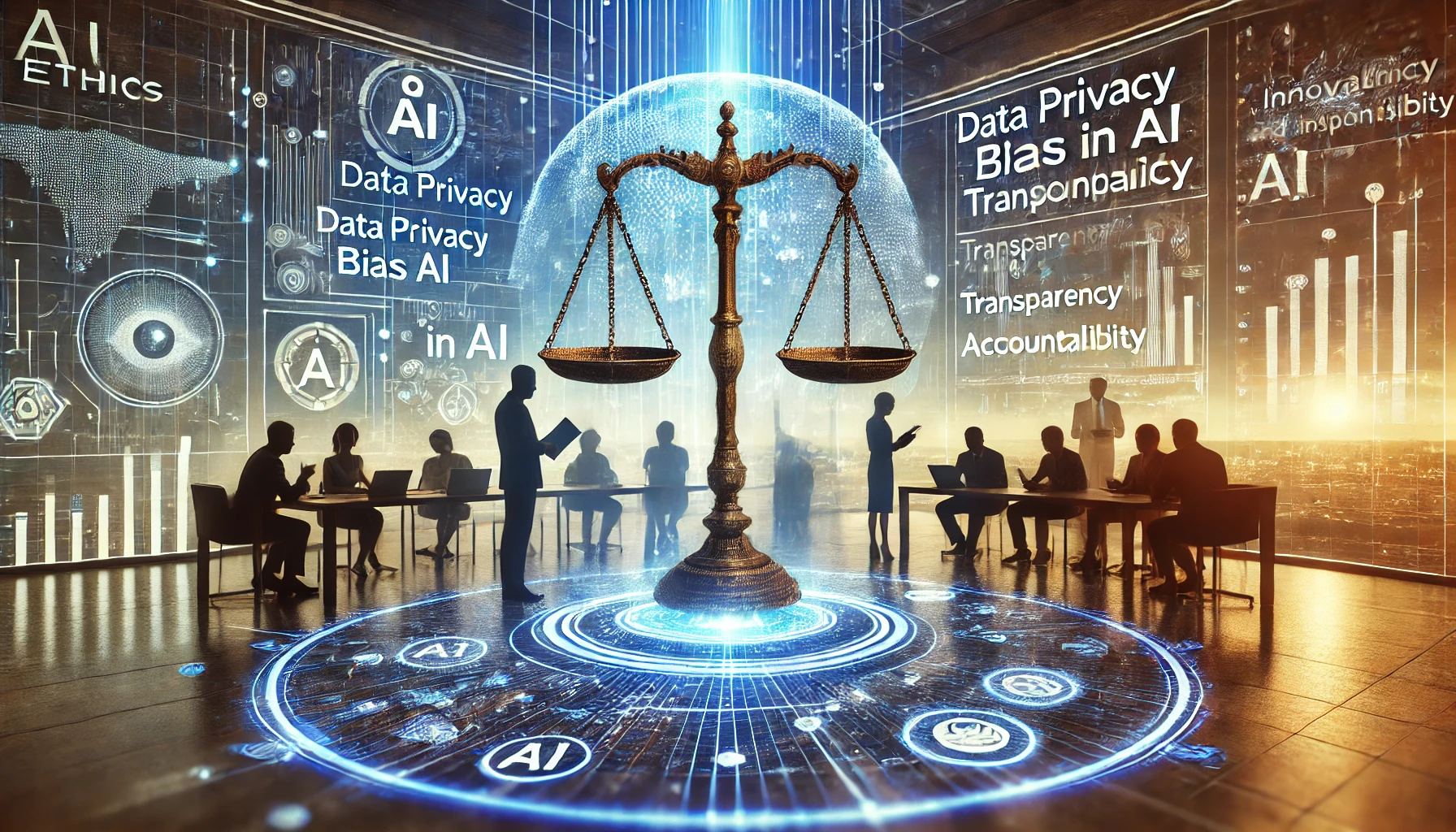
VI. Challenges & Ethical Considerations
The Ethics of AI: Balancing Innovation & Responsibility
As AI continues to advance, it raises critical ethical questions about its impact on society. While AI-driven innovations offer immense benefits—enhancing efficiency, automating tasks, and driving economic growth—there is also a growing need to balance these advancements with responsible development and deployment. One of the key ethical concerns is ensuring that AI systems operate transparently and fairly, without reinforcing discrimination or bias.
Another significant issue is data privacy. AI relies on vast amounts of personal and corporate data to function effectively, raising concerns about how this information is collected, stored, and used. Ethical AI practices demand strong data governance policies to prevent unauthorized access, misuse, or exploitation of sensitive information. Additionally, as AI becomes more autonomous in decision-making, there must be clear accountability frameworks in place to address potential errors or unintended consequences.
Ultimately, ethical AI development requires collaboration between tech developers, businesses, policymakers, and civil society to establish guidelines that promote innovation while protecting human rights, privacy, and societal well-being. Striking this balance is essential to ensuring that AI serves as a force for good rather than a tool that exacerbates existing inequalities or ethical dilemmas.
AI & Job Displacement: Myths vs. Reality
One of the most debated topics surrounding AI is its impact on jobs. While automation and AI-powered systems have undeniably replaced certain tasks traditionally performed by humans, fears of mass unemployment are often exaggerated. The reality is that AI is transforming the nature of work rather than eliminating it entirely.
AI-driven automation is replacing repetitive, low-skill jobs, such as data entry, customer service inquiries, and manufacturing assembly line tasks. However, it is also creating new opportunities in AI development, cybersecurity, and digital transformation. Roles that require human creativity, emotional intelligence, and complex decision-making—such as leadership, strategy, and ethical oversight—are expected to remain in high demand.
Instead of a widespread loss of jobs, the workforce is undergoing a shift that requires upskilling and reskilling. Businesses and governments must invest in education and training programs to prepare workers for AI-driven industries, ensuring that employees can transition into new roles that complement AI rather than compete with it. In the long run, AI has the potential to enhance human productivity and job satisfaction by automating mundane tasks and allowing workers to focus on higher-value activities.
Ensuring AI Fairness: Bias, Transparency & Accountability
AI systems are only as unbiased as the data they are trained on. If an AI algorithm is fed biased data—whether due to historical inequalities, flawed assumptions, or incomplete datasets—it can perpetuate discrimination and unfair outcomes. AI bias has already been observed in hiring algorithms, facial recognition software, and lending decisions, highlighting the need for strict oversight in AI development.
Transparency is crucial in AI decision-making. Black-box AI models, where the reasoning behind AI-driven conclusions is unclear, can lead to distrust and unintended consequences. To address this, businesses and developers must implement explainable AI (XAI) frameworks that allow users to understand and challenge AI-generated decisions. Regulatory bodies are also working toward establishing ethical AI standards that mandate transparency in AI-driven processes.
Accountability is another key issue. When AI systems make mistakes—whether in financial transactions, healthcare diagnostics, or law enforcement decisions—who is responsible? AI governance structures must define accountability measures, ensuring that businesses and developers take responsibility for AI failures and implement corrective actions. Ethical AI requires a commitment to fairness, continuous auditing, and strong regulatory oversight to ensure that AI systems align with societal values and do not reinforce harmful biases.
Conclusion
AI’s ethical challenges require careful consideration and proactive governance. While AI presents incredible opportunities for efficiency and innovation, it also demands responsibility in its design and implementation. Addressing issues of fairness, job displacement, transparency, and accountability will be critical in ensuring that AI remains a tool for progress rather than a source of division or ethical concerns. By prioritizing ethical AI development, businesses and governments can harness AI’s full potential while safeguarding human rights and societal trust.
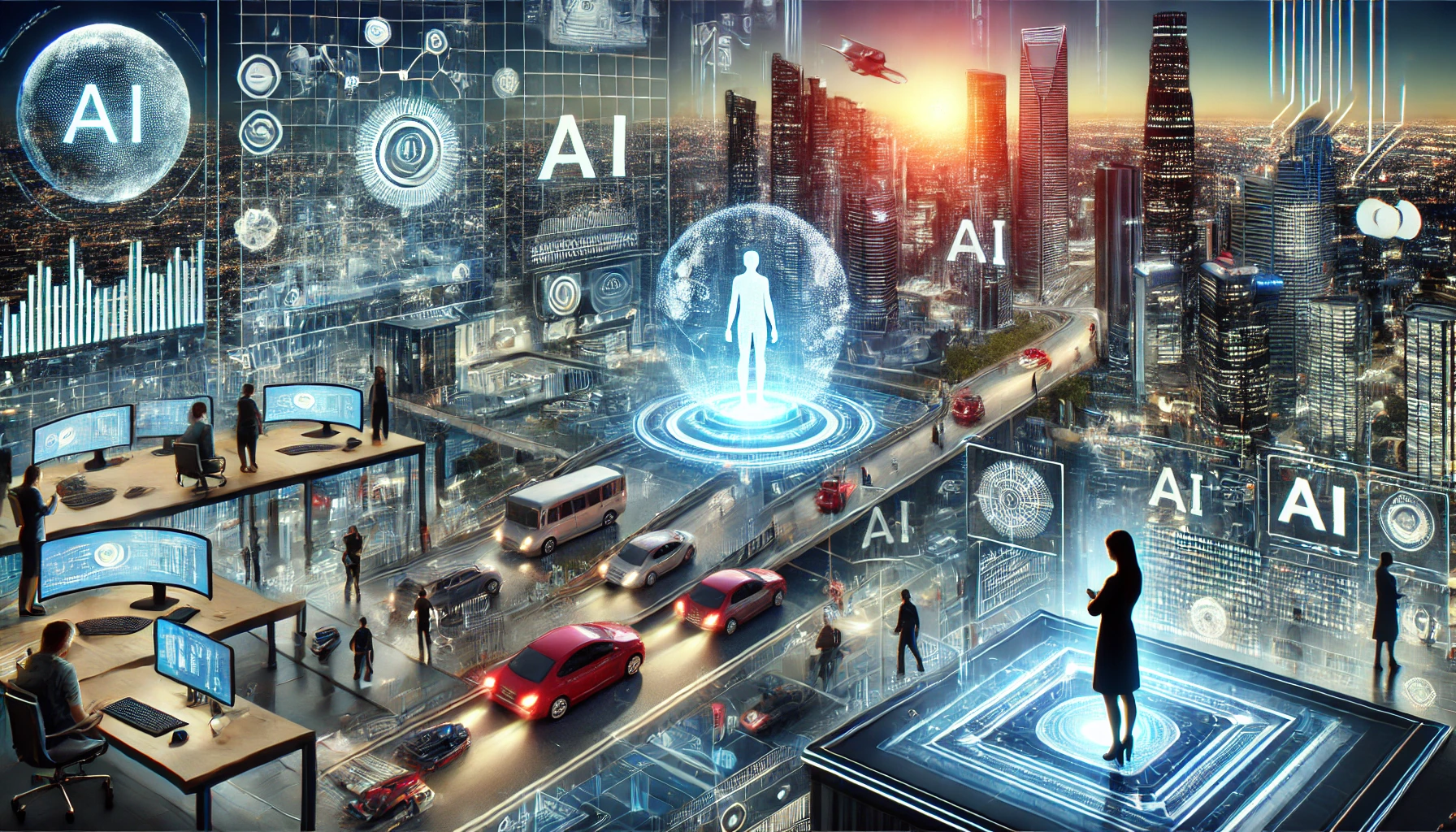
VII. The Future of AI Integration
AI & The Future of Work: What’s Next?
The rapid advancement of AI is reshaping the workforce, and its impact will only grow in the coming years. AI is expected to handle more complex tasks, from automating administrative workflows to enhancing creative problem-solving through generative AI models. While some roles will be replaced by automation, new opportunities will emerge in AI development, ethical oversight, human-machine collaboration, and AI-driven decision-making.
The future workplace will see a shift toward augmented intelligence, where AI enhances human capabilities rather than replaces them. Employees will increasingly work alongside AI-powered tools, using data-driven insights to improve efficiency, productivity, and innovation. Businesses must focus on reskilling workers, integrating AI-friendly policies, and fostering adaptability to ensure a seamless transition into this new era of work.
Freelancing and remote work will also be heavily influenced by AI, with AI-powered platforms enabling professionals to find opportunities, automate administrative tasks, and personalize their workflows. As AI continues to evolve, individuals and organizations must embrace lifelong learning and digital literacy to remain competitive in an AI-driven job market.
The Role of AI in Global Governance & Policy Making
AI is not just transforming businesses—it is also influencing global governance and policymaking. Governments around the world are leveraging AI to optimize public services, analyze economic trends, and enhance national security. AI-driven data analytics help policymakers make informed decisions, predict societal needs, and implement targeted solutions to global challenges such as climate change, healthcare, and economic stability.
However, with AI’s growing influence, there is an urgent need for comprehensive AI regulations and governance frameworks. Ethical concerns such as data privacy, AI bias, and the potential misuse of AI in surveillance and warfare must be addressed through international collaboration. Organizations like the United Nations, the European Union, and national governments are working to establish guidelines that promote ethical AI usage while encouraging innovation.
Global AI policies must strike a balance between protecting human rights and fostering technological advancement. The challenge lies in ensuring that AI remains a force for good, with regulations that prevent monopolization, safeguard against misinformation, and promote fair access to AI-driven opportunities across all societies.
Preparing for an AI-Integrated World: Steps for Individuals & Businesses
As AI continues to shape the future, both individuals and businesses must take proactive steps to adapt and thrive in an AI-integrated world.
For individuals, embracing AI-driven skill development is key. Continuous learning in areas such as data science, machine learning, and digital literacy will be crucial for career advancement. Developing soft skills like creativity, emotional intelligence, and problem-solving will also be essential, as these human-centric abilities remain irreplaceable by AI.
Businesses must focus on integrating AI into their operations while maintaining ethical AI governance. This includes investing in AI-driven automation, optimizing workflows with AI-powered analytics, and ensuring transparency in AI decision-making processes. Companies that prioritize AI training for their workforce will create a more adaptable and innovative work environment.
Collaboration between governments, industries, and educational institutions will be vital in shaping an AI-driven future that benefits all of society. Preparing for this transformation requires a balanced approach—embracing AI’s potential while addressing its challenges to ensure an equitable, efficient, and sustainable future.
Conclusion
The future of AI integration is inevitable, and its influence will only expand across industries, governance, and daily life. While AI presents significant opportunities, careful planning and ethical considerations must guide its development and implementation. By fostering AI literacy, ensuring fair AI policies, and prioritizing human-AI collaboration, individuals and businesses can harness the power of AI to drive progress and innovation in the years to come.
The 3 C’s of Life: “Choices, Chances, and Changes”,
“You must make a choice to take a chance or your life will never change.” – Zig Ziglar
SUBSCRIBE TODAY TO THE FASTEST GROWING GLOBAL RESEARCH REPORT
DISCLAIMER: All statements, claims, views, and opinions that appear anywhere on this site, whether stated as theories or absolute facts, are always presented by The Great Awakening Report (GAR) as unverified—and should be personally fact checked and discerned by you, the reader. Any opinions or statements herein presented are not necessarily promoted, endorsed, or agreed to by GAR, those who work with GAR, or those who read or subscribe to GAR. Any belief or conclusion gleaned from content on this site is solely the responsibility of you, the reader, to substantiate. Any actions taken by those who read material on this site are solely the responsibility of the acting party. You are encouraged to think for yourself and do your own research. Nothing on this site is meant to be believed without question or personal appraisal.
Copyright Disclaimer: The citation of articles and authors in this report does not imply ownership. Works and images presented here fall under Fair Use Section 107 and are used for commentary on globally significant newsworthy events. Under Section 107 of the Copyright Act 1976, allowance is made for fair use for purposes such as criticism, comment, news reporting, teaching, scholarship, and research.
Community Guidelines Disclaimer: The point of view and purpose of this report is not to bully or harass anybody but rather to share that opinion and thoughts with other like-minded individuals curious about the subject.
WE NEED YOUR HELP TO BYPASS CENSORSHIP!
Please help us share this Special Report on social media, with your family and friends and anyone else you think could benefit from our reports. We work hard each week to bring you the best news and need your help to further our reach as we have been suppressed on every outlet. Thank you so much for your continued kind words and support, it means the world to us!
In Love & Light ❤️
The Great Awakening Team
Share This Report
Have questions?
At Great Awakening Report, we are dedicated to supporting your journey toward truth and enlightenment through our specialized Coaching and Consulting services.
Coaching Services: Our coaching programs are designed to guide you through personal awakening and transformation. We offer personalized sessions that focus on expanding consciousness, uncovering hidden truths, and fostering spiritual growth. Our experienced coaches provide the tools and insights necessary to navigate your path with clarity and confidence.
Consulting Services: For organizations and individuals seeking deeper understanding and strategic guidance, our consulting services offer expert analysis and solutions. We delve into areas such as global transitions, alternative news insights, and consciousness studies to provide comprehensive strategies tailored to your unique objectives.
Embark on a transformative journey with our Coaching and Consulting services, and unlock your highest potential. To learn more and schedule a session, visit our Coaching and Consulting pages.
Thank you
Thank you to our subscribers and readers for your continued support and dedication to truth and awakening. Your encouragement, engagement, and belief in our mission make everything we do possible. Together, we are expanding awareness and helping illuminate the path forward.
If you would like to further support the Great Awakening team and our ongoing efforts to share insight, knowledge, and truth, you can DONATE HERE.
With deep gratitude,
– Great Awakening Team
DISCLAIMER: All statements, claims, views and opinions that appear anywhere on this site, whether stated as theories or absolute facts, are always presented by The Great Awakening Report (GAR) as unverified—and should be personally fact checked and discerned by you, the reader.Any opinions or statements herein presented are not necessarily promoted, endorsed, or agreed to by GAR, those who work with GAR, or those who read or subscribe to GAR.Any belief or conclusion gleaned from content on this site is solely the responsibility of you the reader to substantiate.Any actions taken by those who read material on this site are solely the responsibility of the acting party.You are encouraged to think for yourself and do your own research.Nothing on this site is meant to be believed without question or personal appraisal.
COPYRIGHT DISCLAIMER: Citation of articles and authors in this report does not imply ownership. Works and images presented here fall under Fair Use Section 107 and are used for commentary on globally significant newsworthy events. Under Section 107 of the Copyright Act 1976, allowance is made for fair use for purposes such as criticism, comment, news reporting, teaching, scholarship, and research.
COMMUNITY GUIDELINES DISCLAIMER: The points of view and purpose of this video is not to bully or harass anybody, but rather share that opinion and thoughts with other like-minded individuals curious about the subject.


